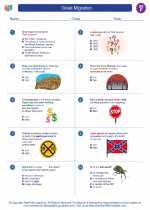History of Republic Day
The history of Republic Day dates back to 1930 when the Indian National Congress declared Purna Swaraj, or complete independence, from British rule. It took nearly 20 years for the Indian Constitution to be drafted and adopted, and on January 26, 1950, it was officially enacted, marking the birth of the Republic of India.
Celebrations
Republic Day celebrations are marked by a grand parade in the capital city of New Delhi, showcasing the diversity and cultural heritage of India. The President of India hoists the national flag and a grand salute is given to the national anthem. The parade includes performances by the military, cultural troupes, and displays of India's rich cultural tapestry. It is a day of national pride and patriotism, with ceremonies held in schools and government offices throughout the country.
Significance
Republic Day is a symbol of India's unity in diversity, as it celebrates the coming together of different states and cultures under one democratic umbrella. It also serves as a reminder of the values enshrined in the Indian Constitution, such as justice, liberty, equality, and fraternity. It is a day to reflect on the progress made as a nation and to reaffirm a commitment to the ideals of the constitution.
Study Guide for Republic Day
- What is the significance of Republic Day in India?
- When did the Constitution of India come into effect?
- Describe the main celebrations of Republic Day.
- What values are enshrined in the Indian Constitution?
- How does Republic Day promote national unity in India?
[Republic Day] Related Worksheets and Study Guides:
.◂Social Studies Worksheets and Study Guides Sixth Grade. Great Migration

 Worksheet/Answer key
Worksheet/Answer key
 Worksheet/Answer key
Worksheet/Answer key
 Worksheet/Answer key
Worksheet/Answer key
